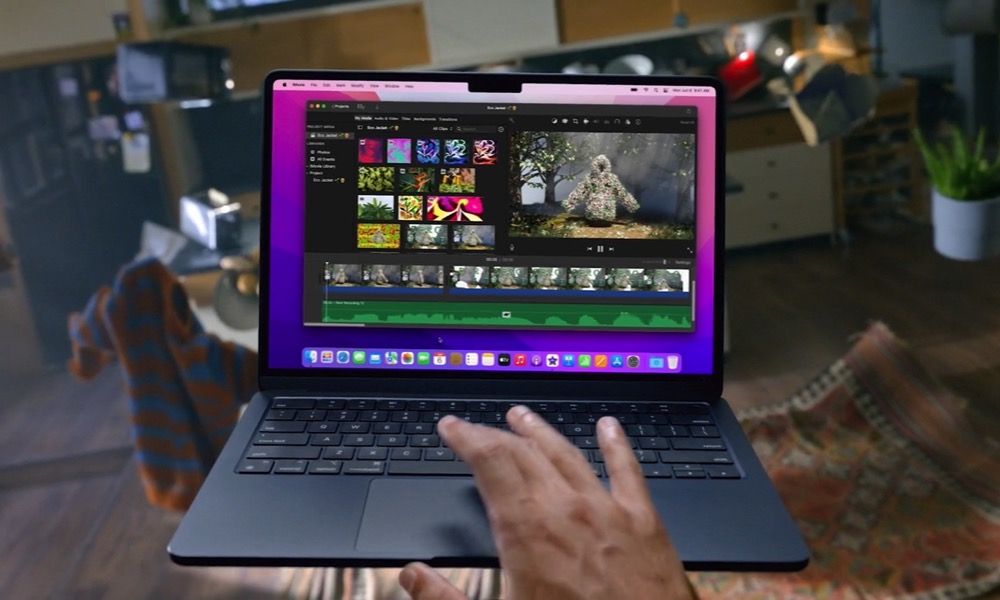Is 8GB of RAM Really Enough for Your Apple Silicon MacBook?
 Credit: Apple
Credit: Apple
Toggle Dark Mode
While those coming from the world of Intel Macs and PCs may automatically opt for a 16GB or better memory configuration, Apple has insisted for years that 8GB of RAM should be enough for most folks using an M-series Mac, and the company’s opinion doesn’t seem to have changed in the past four years.
It may sound counterintuitive in an era of increasing memory requirements, but Apple’s logic is that its own Apple silicon chips use the memory so much more efficiently that very little RAM is wasted during normal use.
The secret sauce is Apple’s Unified Memory Architecture (UMA), which bakes the memory right into the chip, providing lightning-fast access between the CPU, GPU, and RAM. There are no external buses to go through, and Apple silicon can also use all of the available memory for GPU tasks.
The benefits of this approach are readily apparent, although this also has the obvious downside that the memory can’t be upgraded later on. What you buy is what you get. That’s not much different than the soldered-in memory of the Intel MacBooks of yesteryear. Still, in this case, there’s more of a method to Apple’s seeming madness because the memory architecture is blazing fast compared to the competition.
This faster performance translates to the need for less memory because there’s far less reason to keep data cached in RAM just because an app might need to use it again. Due to the performance constraints of RAM in an Intel architecture, Windows long ago adopted the habit of excessive caching with relatively conservative garbage collection processes. This meant more RAM was occupied than necessary, and 8GB was rarely enough. Intel-based Macs didn’t fare much better since even though macOS was already better at memory management, it had to live within the constraints of the slower memory architecture.
Apple silicon’s UMA changed the game. Since memory access is an order of magnitude faster, garbage collection can more aggressively compress data in memory or flush it out entirely since it takes a fraction of the time to decompress or reload it if it’s needed again.
Last fall, Apple product marketing VP Bob Borchers sat down with YouTuber Lin Yi for an interview in which he reiterated how 8GB on an M-series Mac is equivalent to 16GB on other systems — an analogy that Apple has been making in one way or another since it debuted the M1 chip nearly four years ago.
Comparing our memory to other system’s memory actually isn’t equivalent, because of the fact that we have such an efficient use of memory, and we use memory compression, and we have a unified memory architecture. Actually, 8GB on an M3 MacBook Pro is probably analogous to 16GB on other systems. We just happen to be able to use it much more efficiently.Bob Borchers, Apple VP of Worldwide Marketing
This week, Apple product marketing manager Evan Buyze said in an interview with IT Home that 8GB of RAM should be fine for what many folks do with their Macs, including web browsing, streaming, and even some casual video editing and gaming.
They’re not entirely wrong about that, and my own admittedly anecdotal experience backs that up. I’ve been using an original-model 13-inch M1 MacBook Pro with 8GB of RAM since early 2021, and while I’ve had days where I’ve pushed the limits, those are the exceptions rather than the rule. Most of the time, 8GB is more than acceptable, even for video editing in Final Cut Pro and photo editing in Photoshop.
The scenario where I’ve most commonly bumped up against the 8GB limit is when I’ve had several dozen windows and tabs open in Safari and Chrome. However, that also depends on the sites in question. Some sites consume significantly more memory than others, and many web apps use a lot more RAM in Safari than they do in Chrome, for whatever reason. Ads on some sites can also be surprisingly memory-hungry, so using an ad blocker can be a big help here.
That said, 8GB won’t be enough for every situation. While my 8GB M1 MacBook Pro handles about 98% of the video editing I do in Final Cut Pro, I also have an Intel Mac Pro with 32GB available for the edge cases where I’m layering in a lot of more complex 3D effects or other things that will push the RAM to its limits. As you can probably imagine, running a Windows virtual machine via Parallels on 8GB RAM is also tight. However, it’s very doable if you’re only running basic Windows apps or legacy games.
Chances are good that you already know if you need more than 8GB of RAM. If that’s you, don’t let anyone convince you that 8GB will be enough because it probably won’t. However, if you’re on the fence or you’re afraid of getting a Mac with “only” 8GB RAM, it’s worth considering what you’ll be doing with it. While I’ll very likely go with 16GB on my next MacBook Pro to give me a bit more headroom, it says a lot that I’m content enough with my 8GB M1 MacBook that I haven’t been in any rush to upgrade.









